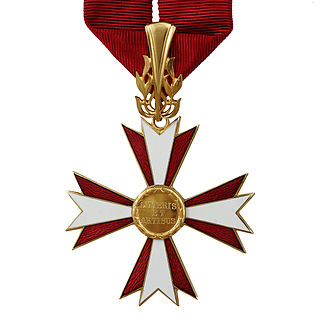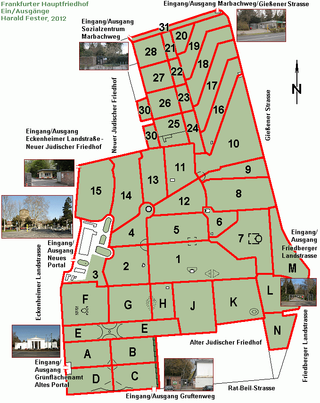
Carl Heinrich Maria Orff was a German composer and music educator, who composed the cantata Carmina Burana (1937). The concepts of his Schulwerk were influential for children's music education.

The Hagenbund or Künstlerbund Hagen was a group of Austrian artists that formed in 1899. The group's name derived from the name Herr Hagen, the proprietor of an inn in Vienna which they frequented.
Josef Greindl was a German operatic bass, remembered mainly for his performances of Wagnerian roles at Bayreuth beginning in 1943.

The Waldfriedhof Dahlem is a cemetery in Berlin, in the district of Steglitz-Zehlendorf on the edge of the Grunewald forest at Hüttenweg 47. Densely planted with conifers and designed between 1931 and 1933 after the plans of Albert Brodersen, it is one of Berlin's more recent cemeteries. Its graves include those of writers such as Gottfried Benn, composers such as Wolfgang Werner Eisbrenner and entertainers like Harald Juhnke, and put it among the so-called "Prominentenfriedhöfe" or celebrity cemeteries.

The Austrian Decoration for Science and Art is a state decoration of the Republic of Austria and forms part of the Austrian national honours system.
Geiger is a German, Hungarian or French surname. In the German language Geiger means "violin player."

The Nordfriedhof, with 34,000 burial plots, is one of the largest cemeteries in Munich, Bavaria, Germany. It is situated in the suburb of Schwabing-Freimann. It was established by the former community of Schwabing in 1884. It is not to be confused with the Alter Nordfriedhof in Munich, which was set up only a short time previously within the then territory of the city of Munich.

Waldfriedhof Zehlendorf is a cemetery located in Berlin's Nikolassee district. The cemetery occupies an area of 376,975 m2. An additional Italian war cemetery was created there in 1953. A number of notable people of Berlin are buried at the cemetery; some have a grave of honor. In particular, all of Berlin's deceased post-war mayors are buried here.

The Frankfurt Main Cemetery is the largest cemetery in Frankfurt am Main, Germany. It was opened in 1828. The cemetery is located directly adjacent to two Jewish cemeteries—the Old Jewish Cemetery and the New Jewish Cemetery, Frankfurt —and together they form one of the largest cemetery areas in Germany. The cemetery is noted for its many monumental graves, its garden architecture and as the site of the graves of many notable individuals.

The State Academy of Fine Arts Stuttgart is a public fine art university in Stuttgart, Germany. It was founded in 1761 and has been located on the Weissenhof since 1946. Its campus consists of three buildings: the Altbau, Neubau 1 or "Architects' Building", and Neubau 2.

The Hauptfriedhof in Karlsruhe is one of the oldest German communal rural cemeteries. In 1871, the first plans to build a new burial ground outside the city center began. The cemetery was laid out in 1874 by Josef Durm in the Rintheim district, east of the actual city, after the inner-city Alter Friedhof Karlsruhe in the Oststadt had become too small. The main cemetery has grown from its original size of 15.3 hectares in 1873 to over 34 hectares. The graves of more than 32,000 deceased are currently in the cemetery.
The Reich Cultural Senate was a body directly subordinate to the Nazi Reich Chamber of Culture, created by Chamber President and Reich Propaganda Minister Joseph Goebbels on 15 November 1935.



















